Before we begin, let's get one thing out: e-bike speeding laws can be very confusing in the U.S. Even seasoned riders are left scratching their helmets, unsure what to do.
While driving laws are fairly uniform across the states, bike laws vary wildly depending on where you’re pedaling.
In Alabama, for example, you can ride your Class 3 e-bike above 28mph (the federal top speed) on the condition that you register it as a motor vehicle. In Nevada, you are not allowed to go beyond 20 mph.
We Will Break it Down For You.
But believe it or not, there is a method to the madness—with just the basics of a few key laws and a bit of history, you can understand e-bike regulations pretty easily.
Let's break down the essentials of bike speeding laws and help you stay safe, legal, and confident no matter where your wheels take you.!
E-Bike Speed Limits: Breaking Down the Federal Law
The first thing to know about e-bike speed limits in the U.S. is that there is a federal law that specifies e-bike speed limits, and about thirty states still abide strictly by that law.

The HB 727 Law
In 2002, a law known as HB 727 was enacted by Congress, which made some changes to the previous definition of the term “e-bike,” which had been laid down by the Product Safety Commission.
This law, known as the HB 727, defined an “e-bike” to include any two-wheeled or three-wheeled vehicle with pedals and an electric motor of less than 750W whose maximum speed when fully powered by the electric motor was under 20mph.

According to this law, e-bikes could either be fully and solely powered by the motor (throttle-assisted) or by a combination of both pedaling and the throttle (pedal-assisted e-bikes).
The HB 727 federal law classified e-bikes by top speed and level of pedal assistance and has become the backbone of e-bike speed limits in most states in the U.S. Here is a classification of e-bikes and their speed limits according to this law.
Class 1: Pedal-assist only, with a maximum speed of 20 mph.
Class 2: Throttle-assisted, capped at 20 mph.
Class 3: Pedal-assist only, with a higher limit of 28 mph.
E-Bike Speed Limits in the U.S. An Overview!
Ebike speed limits tend to vary from state to state in the U.S. 30 states, including Georgia, Illinois, Kansas, and New Jersey, follow the federal law, but other states like Florida, Louisiana, and Hawaii strongly recommend that you keep your ebike under 20mph.

Other states follow the federal law but have further amendments that allow you to ride your e-bike above 28mph as long as you register it under a different vehicle category.
In Alabama, for example, you can ride your Class 3 e-bike above 28mph on the condition that you register it as a motor vehicle.
In Louisiana, any bike that goes above 20 mph must be classified as a moped.
In Iowa and Colorado, there are restrictions on paths where you can ride your e-bike.
In New York, the e-bike speeding laws differ depending on whether you are in New York City or anywhere else in the state.
States that stick strictly to the Federal Law
Out of the 50 states, about 30 states, including Georgia, New Hampshire, North Carolina, and Pennsylvania, comply strictly with federal law governing the top speed of e-bikes: class 1 and 2 e-bikes cannot exceed 20mph, and class 3 e-bikes only go up to 28 mph.
Here is a map of all other states which comply strictly with the federal law:

States with Lower Recommended Speed Limits
Some states have set their e-bike speed limits according to the federal law but strongly recommend bikers to go slower and keep it under 20 mph. In 9 states, including Florida, Maryland, Mississippi, and Delaware, the maximum speed for a Class 1 and 2 an e-bike is 20mph. A class 3 ebike can go up to 28 mph.

States with Additional Restrictions
Some states and localities have additional restrictions on their e-bike speeding laws. States like Alabama, Alaska, California, and Massachusetts follow federal speeding limit of 20mph for Class 1 and Class 2 bikes, but you can still ride your e-bike with a top speed of above 28 mph as long as you register it as a motor vehicle.

In Colorado, Connecticut, and Iowa, federal speed limit for ebikes applies: 20mph for Class 1 and Class 2 bikes, but all e-bikes are restricted to bike lanes and routes except if local laws stipulate otherwise.
Tips to Stay Within the Speed Limit
- Check your e-bike’s specifications to understand its speed capabilities.
- Cities and counties may have additional restrictions.
- Class 3 e-bikes come with built-in speedometers to help you stay legal.
Why Speed Limits Matter
E-bike speed limits ensure safety for riders, pedestrians, and motorists. They’re designed to balance the benefits of faster travel with the need for control in shared spaces.
Viribus: The Best Bike for Your State
Want to explore your state, run errands or take trips on your e-bike? Try a Viribus e-bike.
Viribus is a conscious manufacturer, and our bikes are specially designed to enable you to commute within the city and indulge in a little bit of adventure in the high mountains.
E-bikes from Viribus are powered by impressive 350-500W motors, offering reliable performance. With formidable lithium-ion batteries, you can take long trips in your state without worrying about running out of power.
Here are some of the most popular E-bike from Viribus
Viribus Panther Electric Mountain Bike
The Panther Electric bike is for city dwellers who love the mountains and exploring scenic landscapes.
It is powered by a 350W brushless gear motor and equipped with a smooth 21-speed Shimano transmission for smooth riding even on rough terrain.

Here are some main features of this bike:
- A 350-gear motor
- Powered by a 48V 10.4Ah high-tech lithium battery.
- Top speeds of 20 Mph with throttle, 24 Mph with pedal
- PAS range estimate of 20 - 40 Miles
- Shimano 7 x 3-speed gear shift system
- Frame made of 6061 Aluminum
The Panther is a great offer if you live in a city like San Francisco, Seattle, Pittsburgh, or Los Angeles, with several hills and beautiful scenery to explore.
The Viribus BZ1 Step-Thru Electric Bike
The Viribus BZ1 is a more commute-friendly e-bike, perfect for running errands within the city and accomplishing your day’s tasks with comfort and ease. Check out some main features:

- Powered by a 500W motor
- Equipped with a 48V 13AH Lithium-ion Battery
- Top speed of 20mph
- Range of over 25 miles per charge
- A capable front suspension system for smooth rides.
- Solid 6061 aluminum frame
Final Thoughts: Pedal (and Throttle) Responsibly
Whether zipping around at 20 mph or pushing 28 mph on a Class 3 e-bike, understanding and respecting your state’s speed limits is key to a safe and enjoyable ride.
Got questions about speed limits or e-bike laws? Drop them in the comments below! Also feel free to check out our informative blog on whether you need a license for your electric bike.

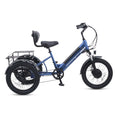

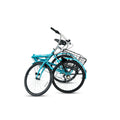









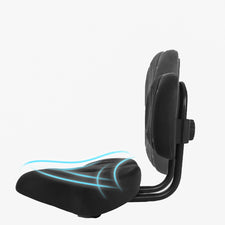






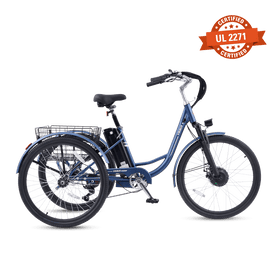
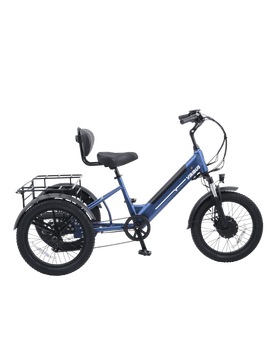





Leave a comment
This site is protected by hCaptcha and the hCaptcha Privacy Policy and Terms of Service apply.